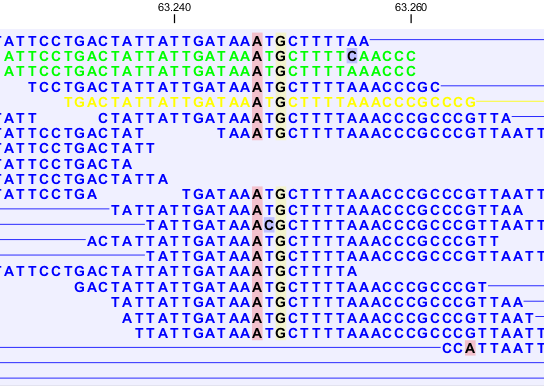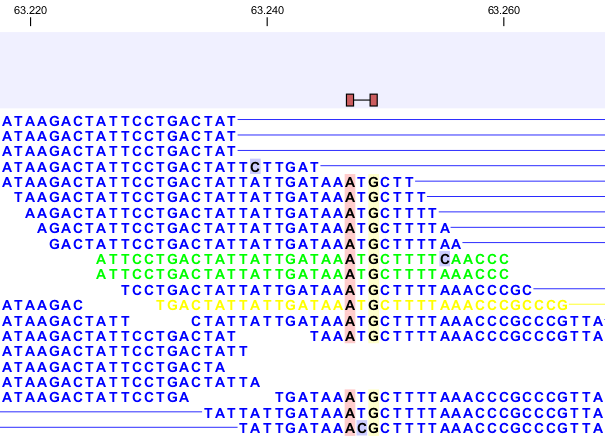Linking adjacent variants in linkage groups
In some situations it is useful to know that two (or more) variants have been observed in the same reads. For calculating the correct amino acid change, for example, all positions in the codon should be considered. As an example see figure 26.17.

Figure 26.17: Two adjacent SNVs.
Here there are two variants as denoted by the coloring of bases. The first is an A and the second is a T, separated by one G that is identical to the reference allele. These two variants will be reported as two separate variants (i.e. two separate entries in the table) but they will belong to the same linkage group. When looking at the variant track, this will be marked by a line connecting the two variants as shown in figure 26.18

Figure 26.18: Two variants in the same linkage group.
In the table view, there is a column with information about which linkage group (if any) that the variant belongs to.
Downstream analysis tools like Amino Acid Changes take the linkage groups into account, and when filtering for known variants you can choose whether linkage groups should be preserved or split.
